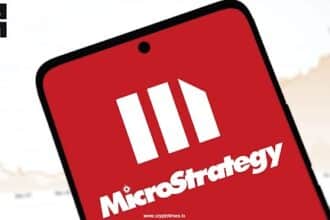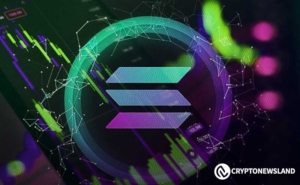Zentry: Turning everyday life into an epic MMORPG
Today I have a very interesting project for you. Zentry is an ambitious and exciting project that aims to build a meta-game layer. They are committed to turning everyday life into an epic MMORPG.
If you play games (PC, console, mobile or web3 games), then you must not miss this article.
Zentry hopes to unify all your activities across different games (web2 and web3) and platforms, allowing you to earn rewards while playing games through another meta-game.
This team has had a lot of success in the GuildFi track in the past and is backed by top investors (Binance, Animoca, Coinbase Ventures, Defiance Capital, etc.) Their treasury is worth up to $150 million.
After reading this post, I’ll tell you how to start playing and earning shards through their first product.
Today I had the pleasure of speaking with Jarindr, co-founder of Zentry, about their vision and web3 gaming in general.
This post was written in partnership with Zentry, and I may continue to work with them in the future because I like the vision so much. I want to support as many high-quality blockchain consumer applications as possible.
1. First, can you briefly introduce GuildFi and why you decided to launch Zentry?
We founded GuildFi over three years ago. GuildFi is a gaming platform. If anyone is familiar with Axie Infinity, this game has created jobs for millions of people in Southeast Asia. We are based in Thailand, and we saw a huge market opportunity in Southeast Asia. That was about two and a half years ago.
At the time, Axie Infinity was one of the biggest games, and actually the only game that had introduced guild narratives and scholarships in gaming. We created thousands of jobs for people to start playing the game and earn rewards and income from it.
As a 10-year gaming and commercial investor, I’ve seen many protocols created. Given my engineering background, I know that the “play to earn” model isn’t really sustainable. You can’t just keep handing out tokens to people who come to speculate. This pyramid-like structure will eventually collapse.
This realization led us to pivot from GuildFi to Zentry. The biggest reason for this pivot was a change in narrative and business model. GuildFi was focused on gaming guilds, but we’re now building something much bigger with Zentry. The name GuildFi still means gaming guilds, and we’re building something more ambitious and revolutionary, so a rebrand was necessary to make people understand that Zentry is about more than just gaming. We aim to revolutionize the industry in a significant way.
2. What problem does Zentry mainly solve?
With Zentry, we are building a game of games. So what are we trying to solve here? We are solving two of the biggest problems in the gaming space, not just games, but the broader industry. This includes both Web2 games and Web3 games, although I dont like to separate them.
The first problem is distribution, and the second is monetization. Gamification has always been an important part of consumer apps. If you are familiar with e-commerce apps or apps like Duolingo, you will know that gamification has always been a key element.

If you look at some of the largest consumer apps, like TikTok or YouTube, you’ll see that they’re always using gamification to keep their users engaged, keep them coming back, and enhance the overall experience. This could be as simple as a daily login reward. If you look at Duolingo, one of its biggest features is streak check-ins, which may seem trivial, but some people have logged in for 700 days in a row. These are all examples of how consumer apps use gamification to keep users coming back.
We are building a layer that covers consumer applications, which can be games, social networks, or any other platform. This layer helps these applications monetize better, improve user retention, and create a real story background that users are really willing to visit continuously.
Zentry is an ecosystem of connected products, all with a common goal. Think of it like a universe of connected games, with stories, IP, and characters for people to immerse themselves in. To progress in our games, you might need to do something outside of the game, interacting with different layers and applications.

Our layers help these applications achieve better monetization and distribution. For example, if you frequently play games like Dota, League of Legends, or Axie Infinity, each of which has its own mini-games and achievements. Our layers add another level of engagement. For example, every time you hit an opponent in Valorant or complete a game in Axie Infinity, you may receive additional rewards from our layers.
These rewards could be various resources from the Zentry universe. Playing different games earns different resources, which can be used to craft items, gift cards, or upgrade profiles. This encourages players to return to their favorite games and helps these games achieve better monetization.
First-party publishers may be reluctant to use mechanics like timed loot boxes or gambling because users may think they are just trying to squeeze more money out of them. As a third party, we can apply these game mechanics on different games without worrying about these issues, thereby enhancing the user experience and monetization capabilities without affecting peoples perception of the original game or application.
3. So, Zentry is a bit like the movie Ready Player One, where everyone plays a game in a persistent universe, but is essentially playing a bunch of different games. Can people understand Zentry in this way?
Exactly. If you look at our daily lives, this is already happening, it’s just scattered everywhere. For example, if you’ve played 20,000 hours on Dota, that’s very valuable. You’re an important persona for game publishers who are looking for experienced players. Let’s say I’m a new game developer and I want to reach people who have played mobile games for at least 10,000 hours to test my new game. This is a good example of why this is important and how you can eventually monetize your data and skills.

Zentry empowers users to grow, prosper, and make their daily activities profitable. Unlike those that rely on an unsustainable “play to earn” model (earning tokens by playing games), we have a more sustainable model.
This applies not only to the digital realm, but also to the physical realm. Imagine you want to craft a rare sword in Zentry, which requires resources from different games. We dont force people to play different games because thats not practical. Users usually only play a small subset of games. For example, if you want to craft that sword, and you need resources from game A, but you only play game B, we designed a model where you can still create those resources because there are other players playing game A.
Now imagine that the last resource you need can only be found in a physical store. You can go to a new partner store, like Dunkin Donuts, and be one of the first 500 customers. This creates collaboration between the digital and physical spaces. Remember when Pokémon Go had rare Pokémon appear in specific locations, driving huge crowds to specific stores? We have the power to create similar experiences in any space, from the digital to the physical world.

4. Zentry will launch a series of interconnected products, starting with Nexus. Can you introduce your products?
We are starting with Nexus, which has been live for a few weeks. We have attracted over 100,000 users. Nexus gamifies social network interactions, building games on top of them. We have created a social graph to identify powerful users in the Web3 ecosystem. What we offer is a gamified experience, not just a mining platform like other platforms, but a real game. Although the current version is more simplified and focused on direct interactions, our next upgrade will make Nexus a more complete game.

In the full version, every time you talk about different games on Twitter or earn resources, you can use these resources to craft items and equip them to your profile, play PVP battles with other players, or create a guild. We want to encourage a gamified experience that allows users to become content creators while playing games. We believe that Web3 lacks enough content creators, which makes the industry dependent on a few influencers, streamers, and players. There is a big gap in this regard compared to Web2 games.
For example, hiring a YouTuber or streamer with 1 million subscribers to play your game might cost $5,000 to $7,000. However, hiring a similar Web3 influencer might cost five to six times more. Nexus aims to solve this problem by gamifying content creation. Instead of directly incentivizing people to create content, we make it fun through games, improving the way people interact with social networks.
The product we will be launching in Q3 is Radiant. Radiant is a collection of games designed to enhance your daily gaming experience across different games, both Web2 and Web3.

It acts as an overlay, adding new layers of interaction and rewards. For example, if you play games like CSGO or Apex Legends, Radiant introduces a mechanic similar to loot boxes to all the games you play. These loot boxes provide items and resources, encouraging players to engage more with their games. We hope to create a win-win situation for game publishers and players.
The third product coming soon is Zigma, our primary NFT collectible. While we haven’t revealed many details yet, Zigma will serve as a global passport to the entire Zentry ecosystem.
5. What do you think is Zentry’s advantage in the market?
Zentry is a layer that runs on top of thousands of existing games. If some games fail, we dont fail with them. Our layer integrates into existing successful IP and new games.
One of our biggest advantages is our team, which consists of veterans from Web3, advertising, ad tech, and the gaming industry. In addition, we are one of the largest gaming ecosystems with $150 million in funding. This allows us to incentivize and build the entire Zentry ecosystem and invest in games. The most important thing is that Zentry itself will not fail because of the failure of a single game.
6. What role does the $ZENT token play in the Zentry ecosystem?

The Zentry token will play multiple roles in multiple areas and will be used in all of our Web3 builds. First, Zentry is profitable and the revenue we generate can be used to buy and burn these tokens. These tokens will be the primary currency for all of our products, both trading and selling. This applies to games, social networks, and all the layers we build. The Zentry token will be the only token used by all platforms and partners who want to work with us.
For example, if a game wants to join the Zentry universe, they need to pay us fees in our tokens to manage the distribution of resources in their game. Also, when you stake Zentry tokens, you will have access to multiple ecosystems, as we also invest in multiple areas such as games, social finance, and artificial intelligence.
We call this staking rewards. When you stake, you get rewards that can be used to buy tokens or get additional tokens when you participate in different games. For example, if you like running and we invest in a running ecosystem, you can get more tokens from that ecosystem. We want to distribute the right tokens to the right people to ensure that they have the highest probability of being used again in that ecosystem.
7. What do you think of the current Web3 gaming industry?
I think we have all gone through different cycles of the evolution of Web3 gaming. From the beginning, if you remember 2017, people were already exploring how to integrate gaming applications with blockchain, even though the concept was not fully developed at the time. Now it’s been close to six or seven years, and we have gone from initially having no trust or belief in Web3 gaming to now having real players and high-quality developers entering the space. These new entrants are trying to create dreams that were not possible in Web2.
If we look at the current state of Web3 gaming users, I would say it is still early days, but the potential is huge. No other industry has the potential to attract millions of users like gaming. Right now, people are still trying to build games on the blockchain without fully understanding the unique advantages that blockchain technology offers.
For example, the traditional gaming industry uses Kickstarter for fundraising, which is different from Web3. In Web3, people invest in your company from the beginning and stay as your game develops. We need more high-quality developers from creative industries who understand both traditional games and Web3.
Major companies such as Ubisoft have tried to enter this space, but usually failed because they did not understand Web3 culture. Similarly, some Web3 game studios do not know how to create engaging games. However, we have also seen those who have been able to make progress in both Web3 and Web2.
We are still waiting for a fully successful Web3 game. Competing with giants like PlayStation who have huge budgets is challenging. Blockchain offers a unique way to distribute games and acquire users that is not possible with traditional games.
For example, Mavia launched a campaign on the Apple Store that used token airdrops to incentivize downloads. This strategy helps acquire users who become loyal fans because they can spend tokens earned in the game.
We are still in the exploratory phase. Many Web2 studios are exploring Web3 because it offers new ways to engage and incentivize users. We just need a successful game to demonstrate the power of blockchain in gaming and help people understand its huge potential for user acquisition and engagement.
8. Are there any games out there right now that you think have the potential to be a huge success?

Honestly, Im pretty pessimistic about AAA games. AAA games take a lot of time and a big budget to develop, and require the expertise to create high-quality games. In contrast, Im more interested in indie games that take less time, are well designed, and have the right incentives.
For example, Pixels is a simple game, a farming simulator similar to FarmVille, that will gradually develop into an RPG game. It has a large number of users, probably a mix of humans and robots. This example shows how powerful incentives are in getting users to start playing the game. Of course, whether this is sustainable is another question, which everyone is trying to solve.
If I were to point to a sustainable model, I can’t give a definitive answer as this is still an evolving space. However, I think there is a good user base for games on Ronin as they are familiar with blockchain and games. The success of Axie Infinity on Ronin shows that there is a loyal user base that is ready to use the wallet for gaming.
Ronin attracted millions of users in Southeast Asia through the use of incentives. If anyone can replicate this success, I think some indie games that rely on Ronin could serve as a good model.
Im also excited about Parallel and the projects they are building.
Original link
Disclaimer: The content of this article solely reflects the author's opinion and does not represent the platform in any capacity. This article is not intended to serve as a reference for making investment decisions.
You may also like
US equities slide as trade war escalates, Powell signals no rate cut
Tariff and interest rate concerns overshadowed a positive March jobs report
Sei Investments increases 39% stake in MicroStrategy

Fidelity Spot Solana ETF Gains Traction As SEC Acknowledges Filing

Paul Atkins Moves Closer to SEC Chair Role After Senate Committee Approval
